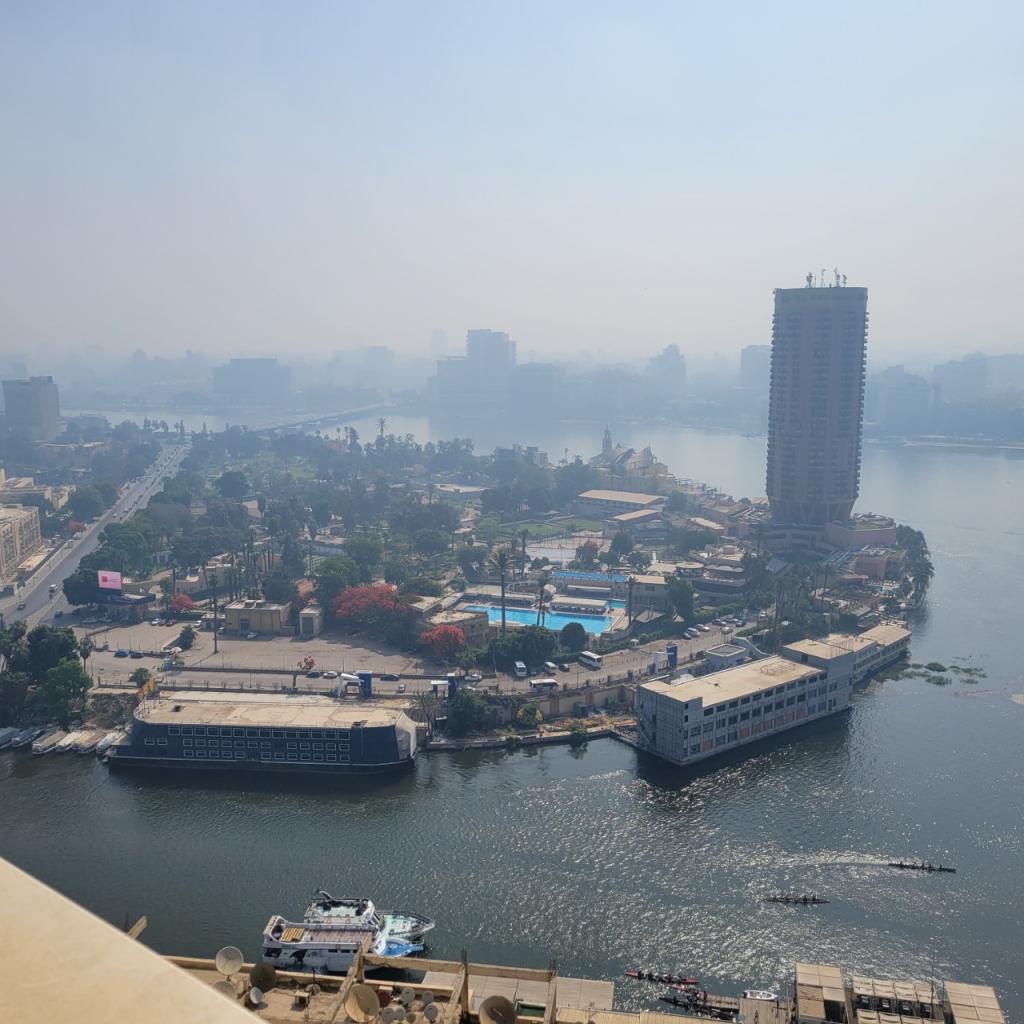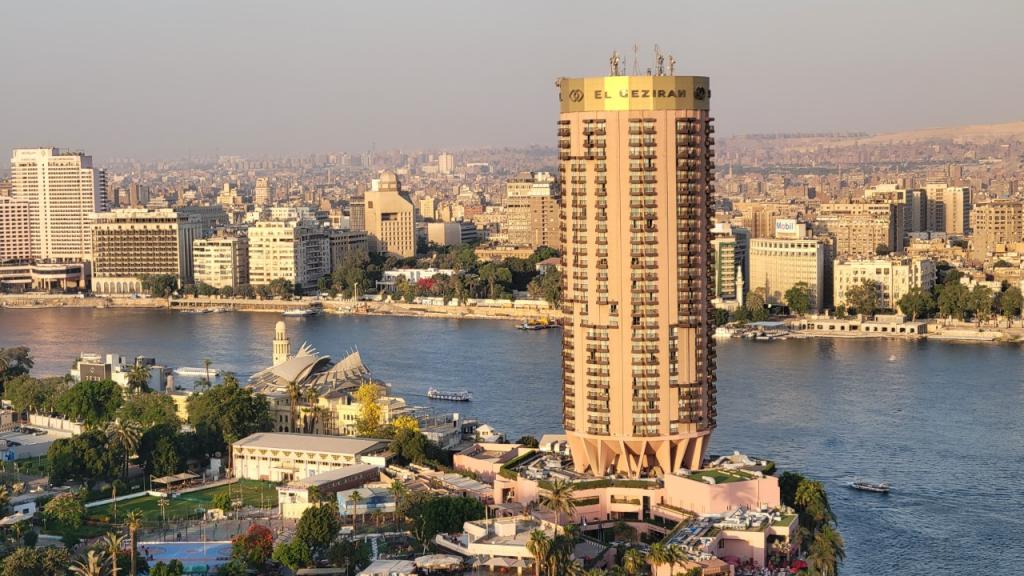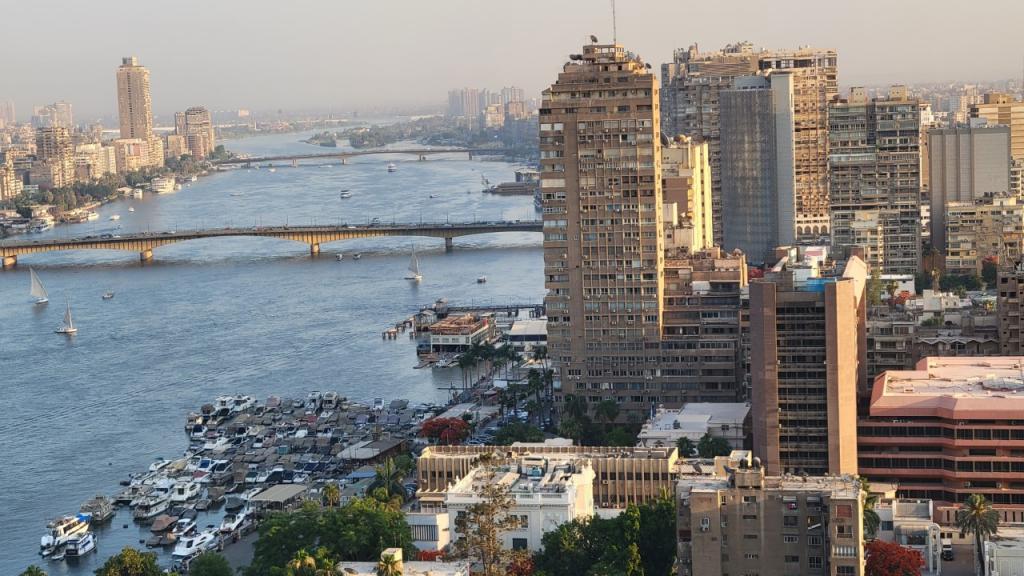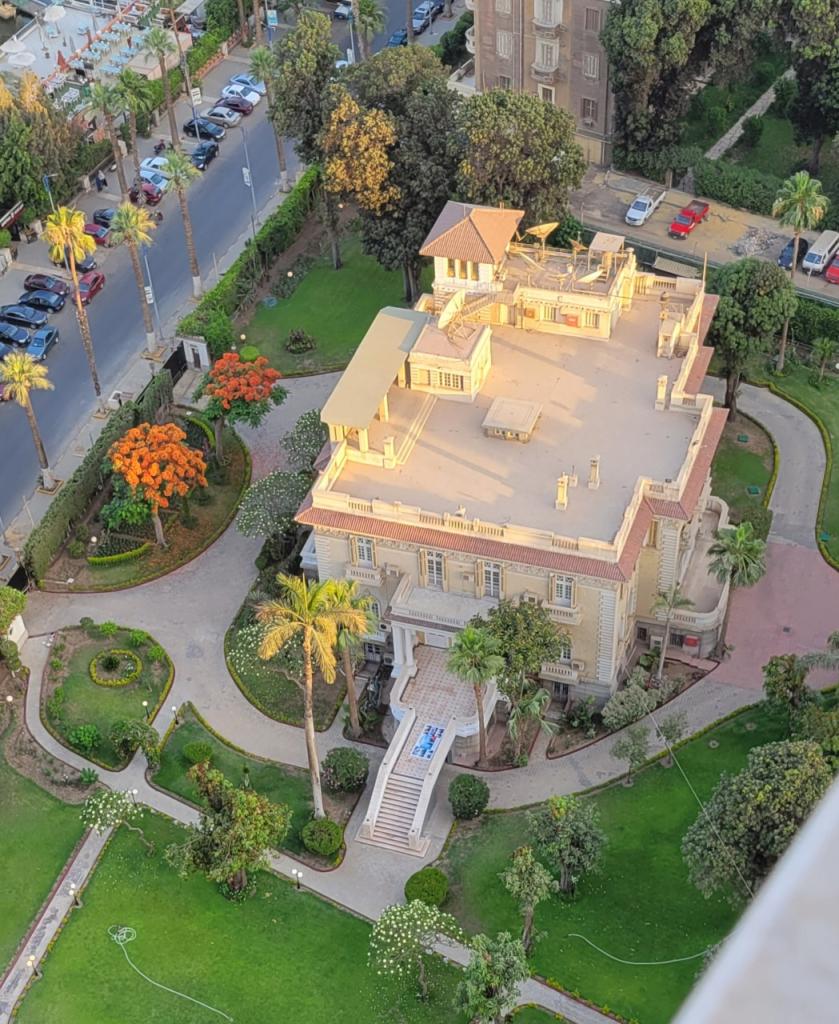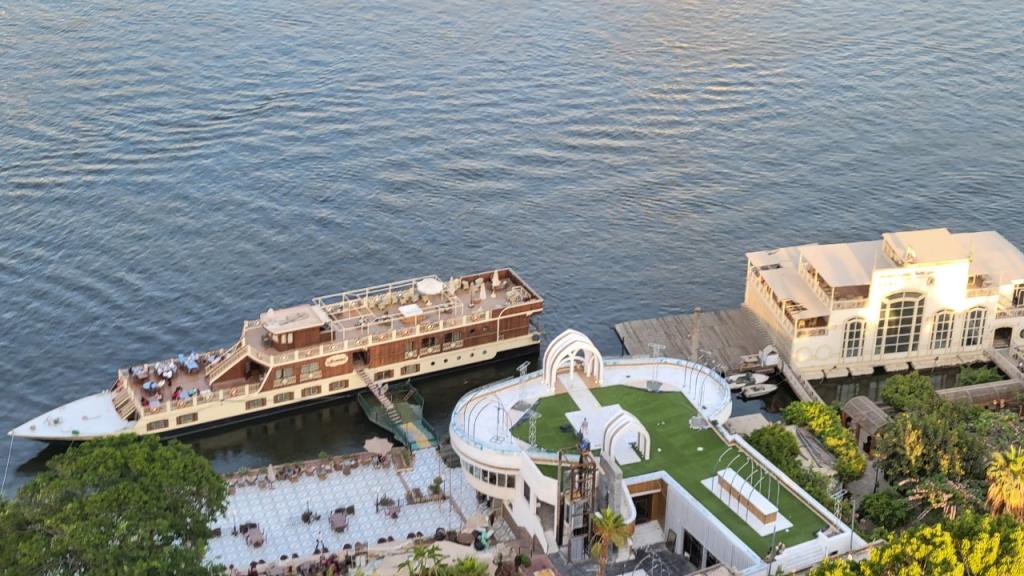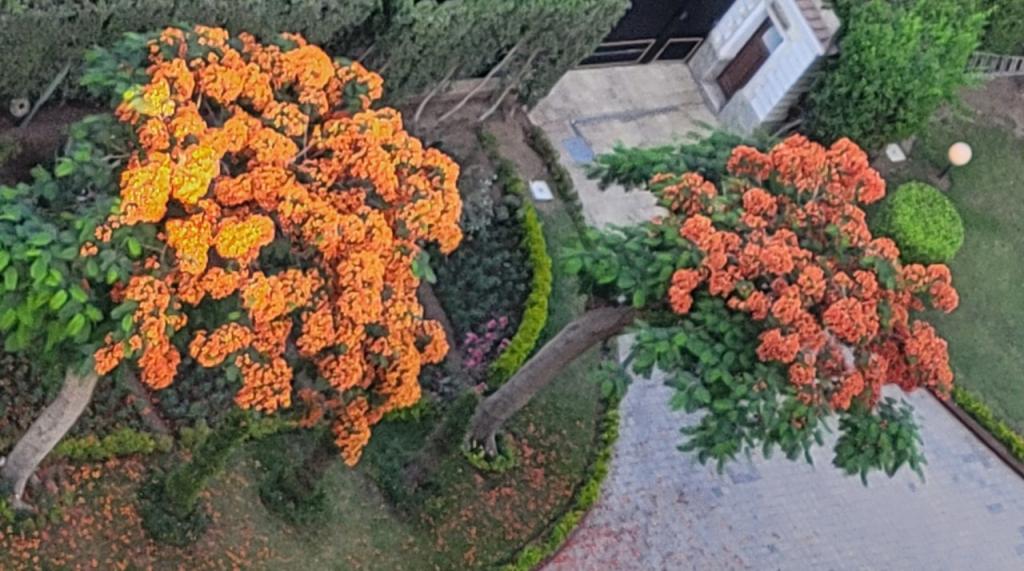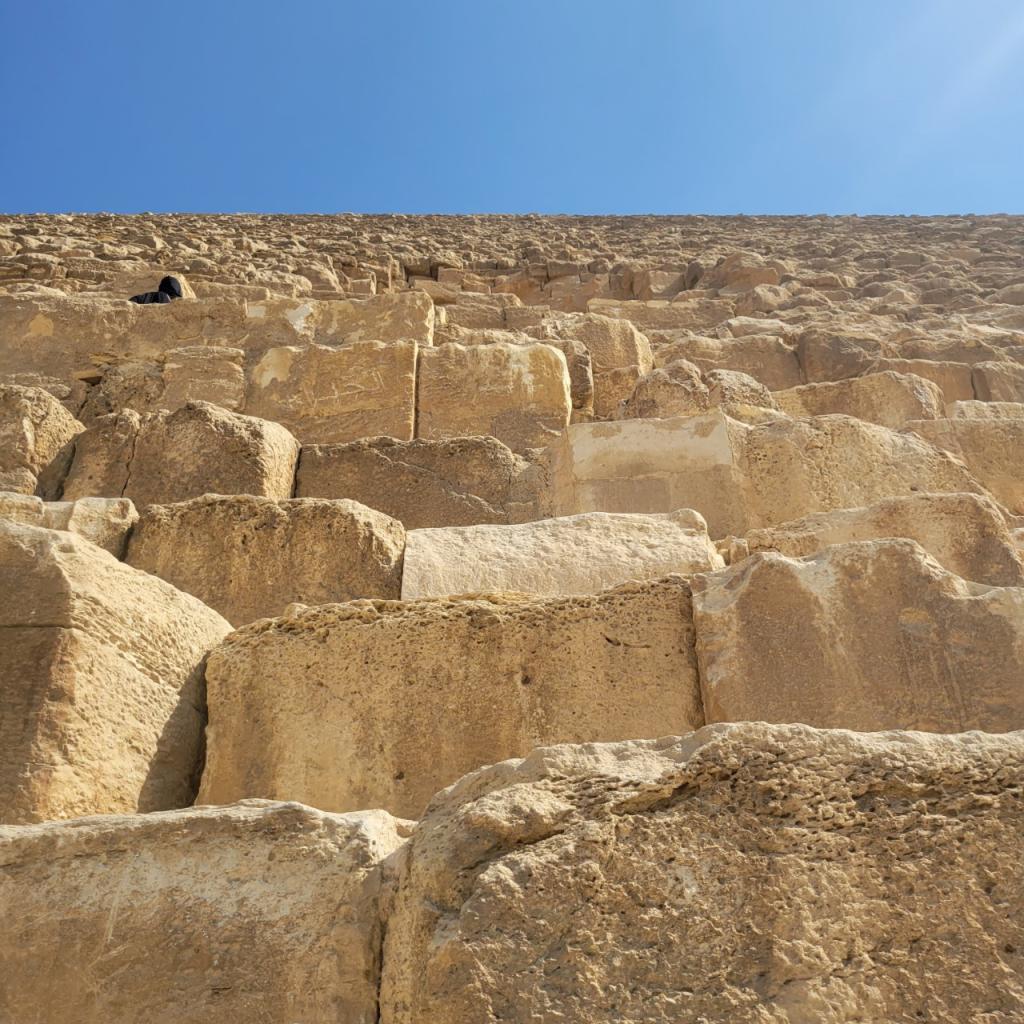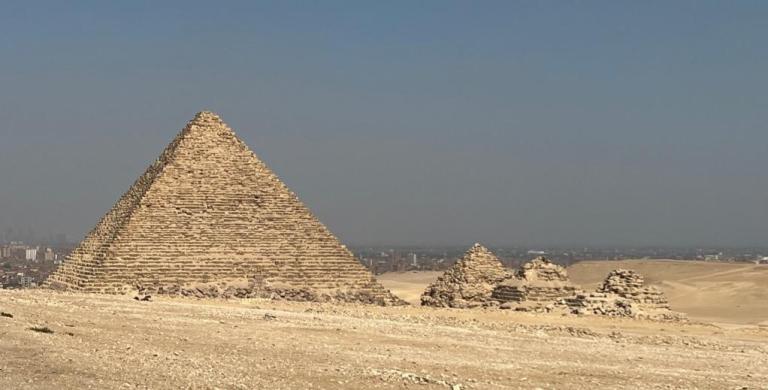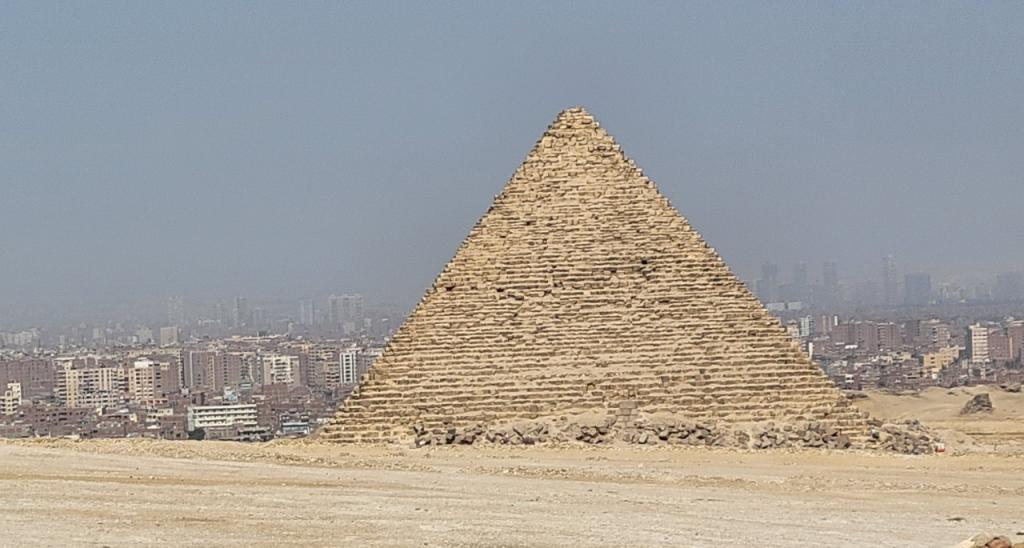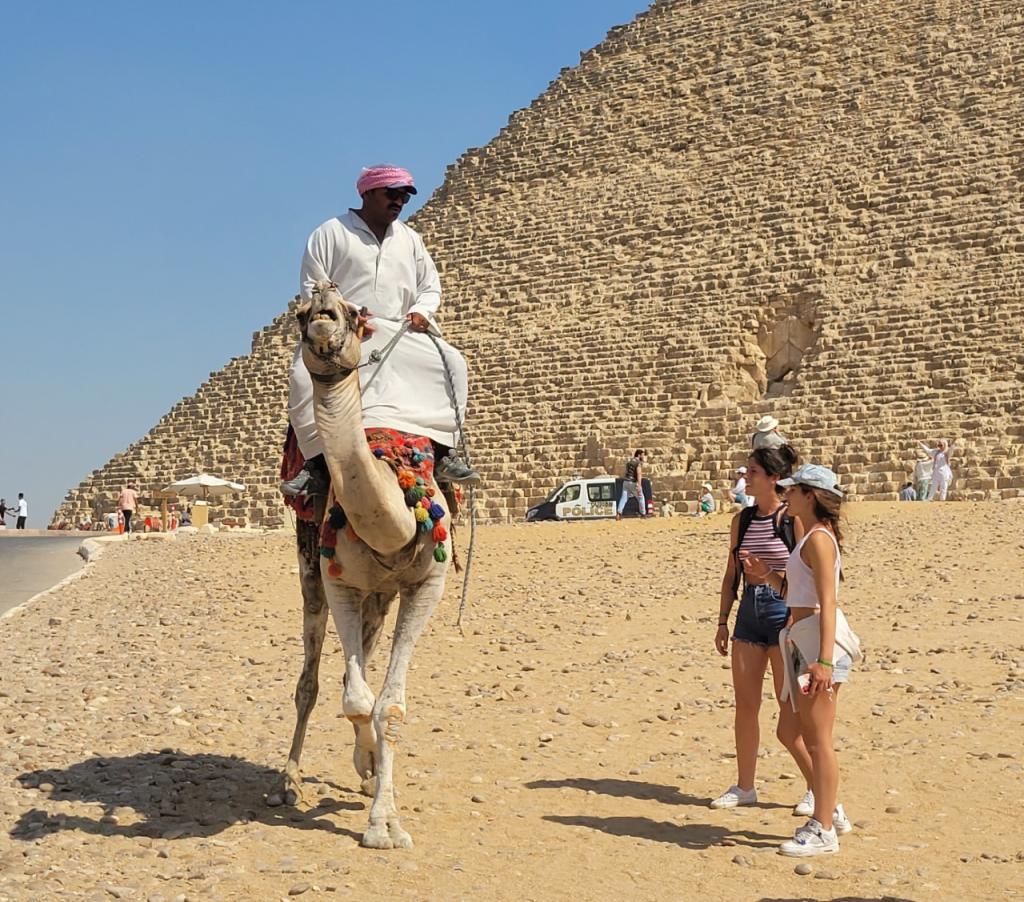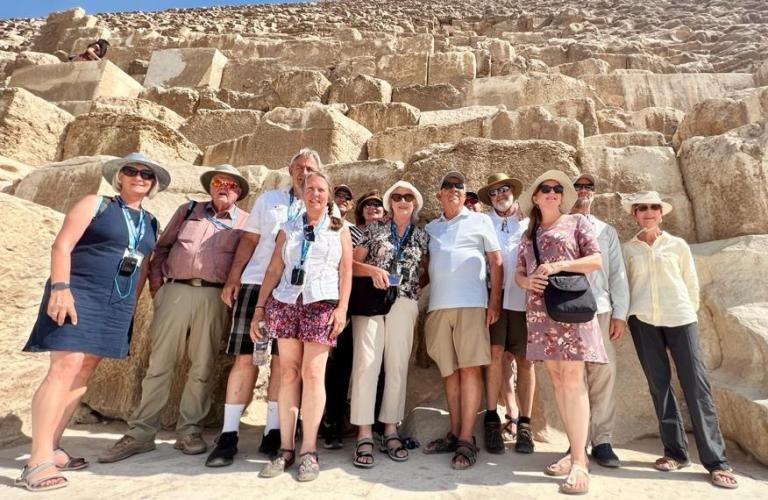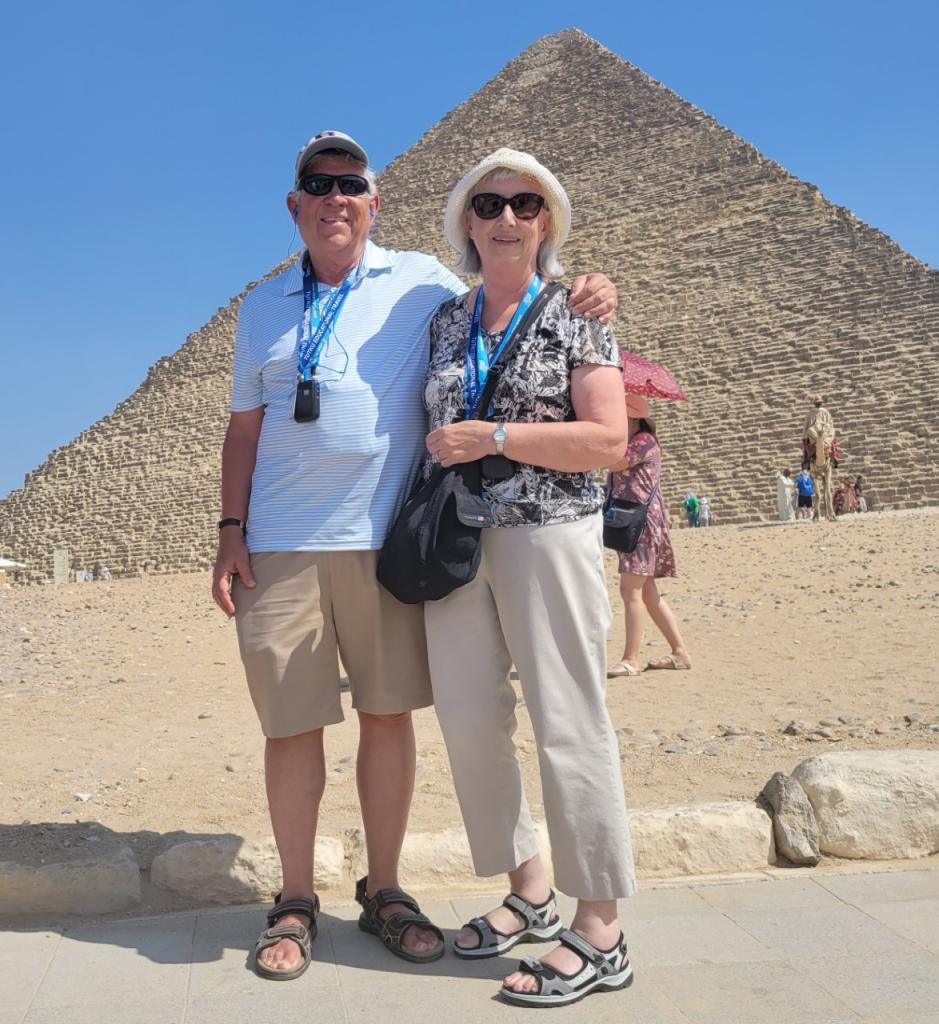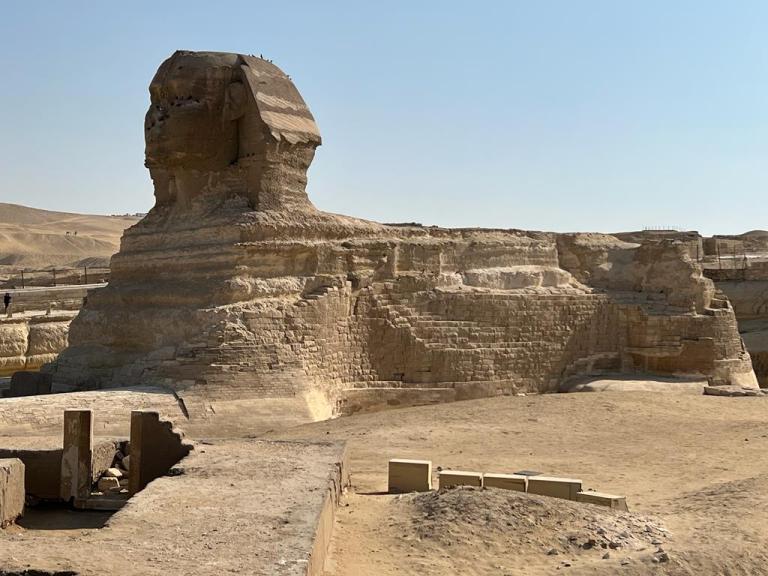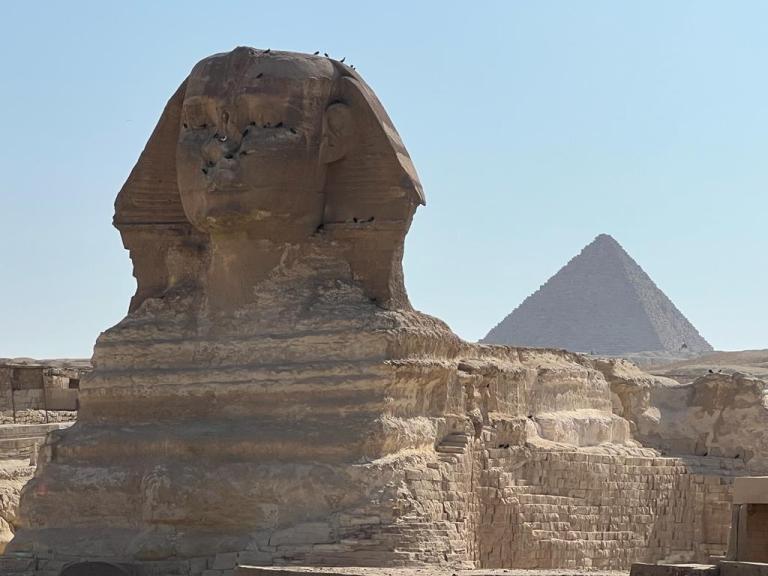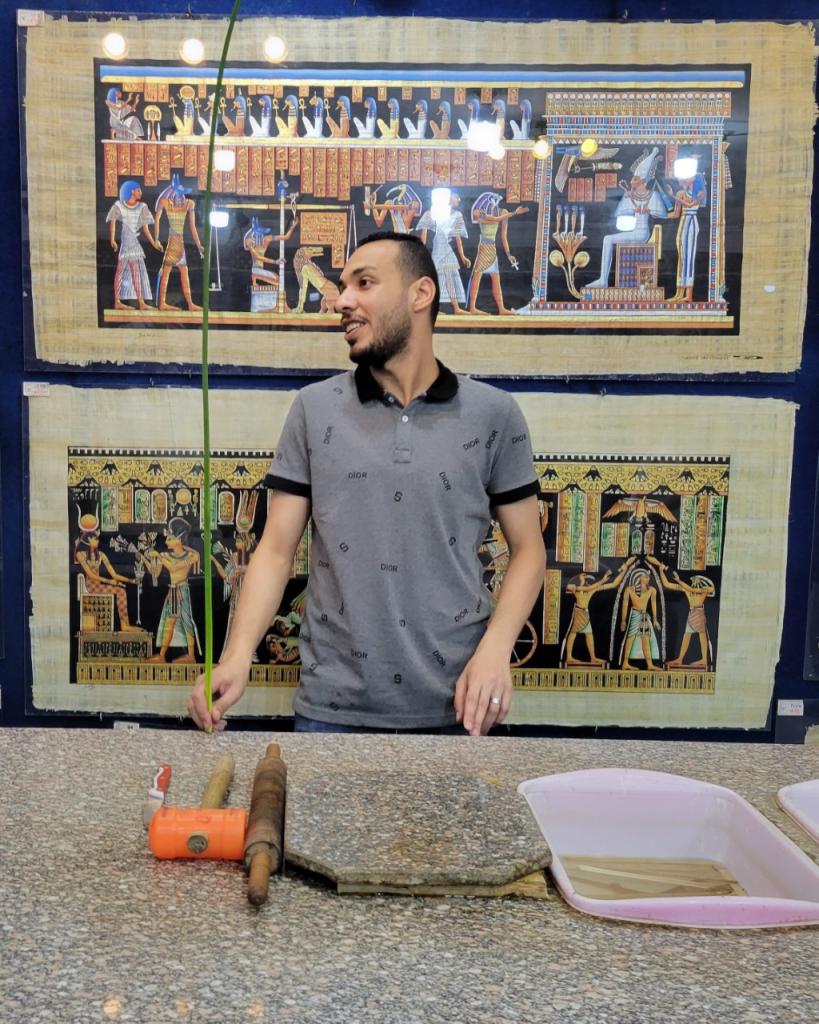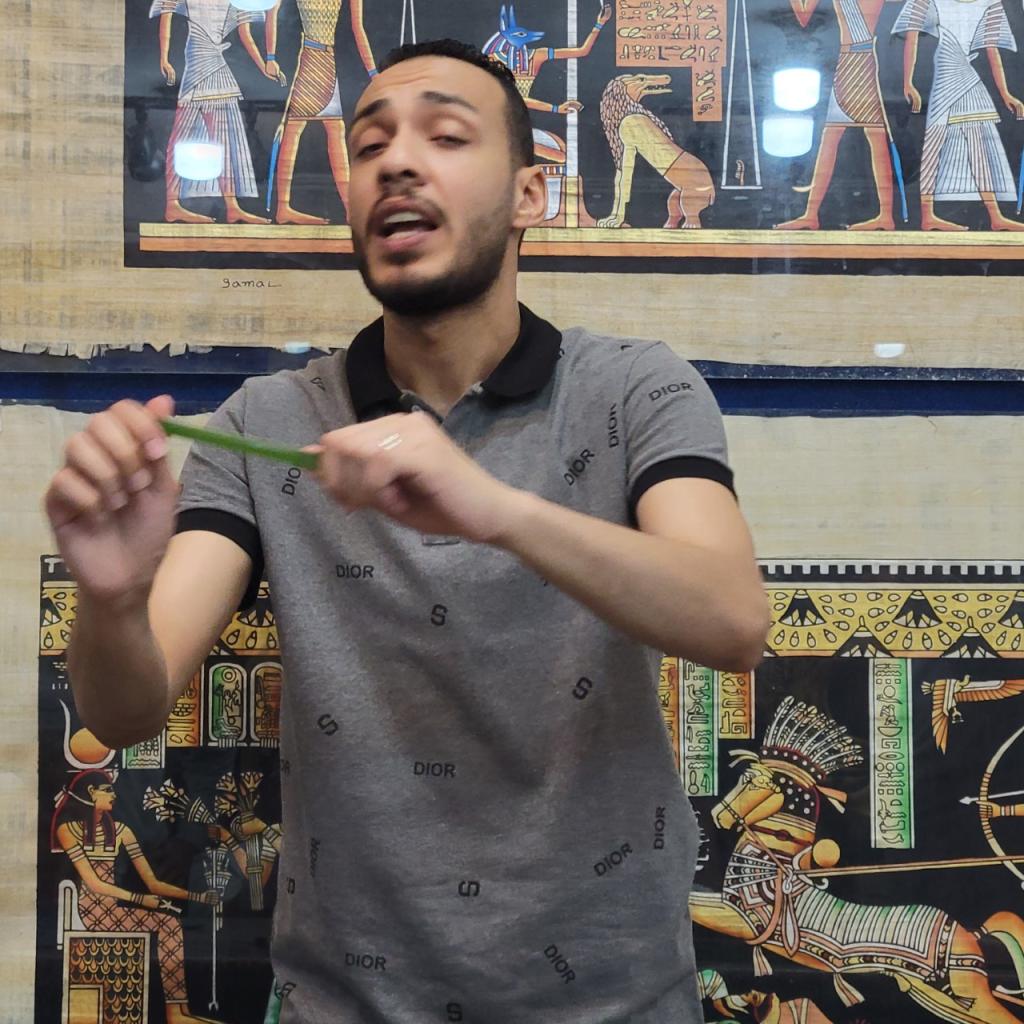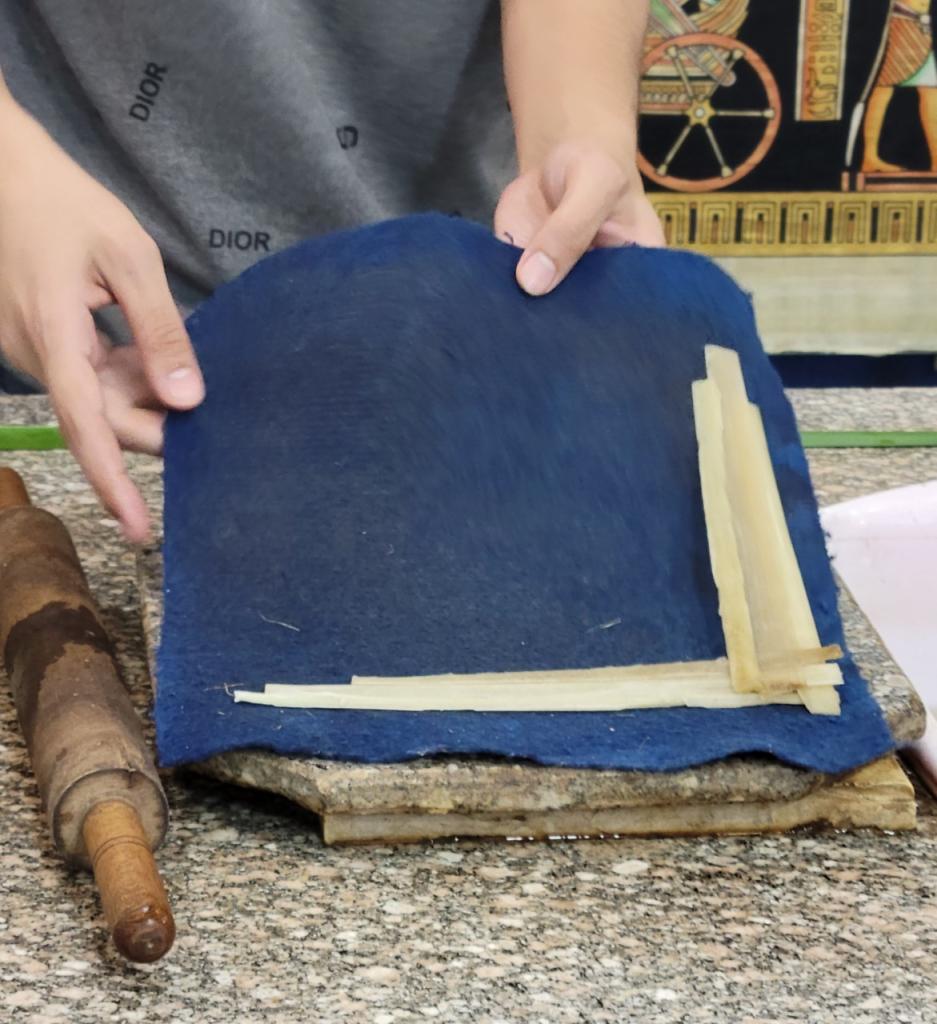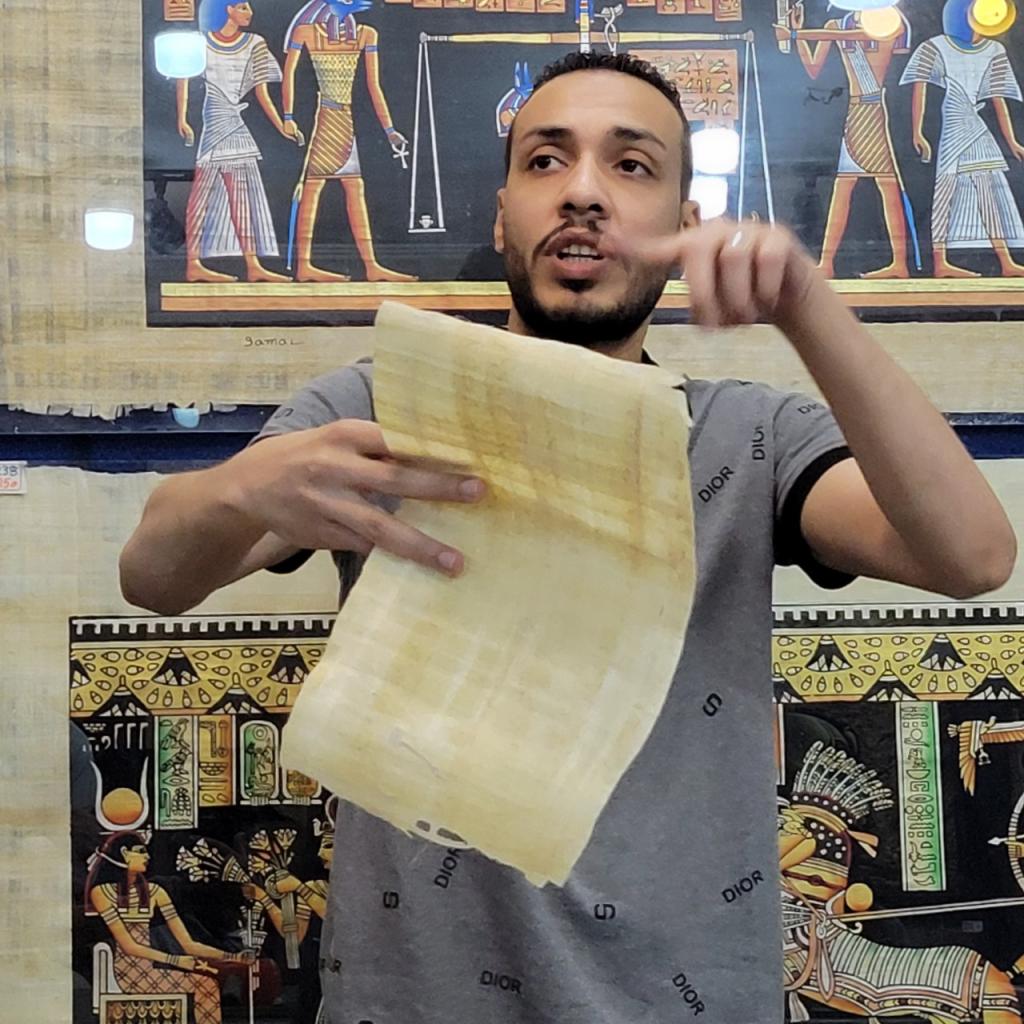Cairo is a huge city of 9.5 million people, with extremes of wealth and poverty. The face they want you to see looks like this…
A city of large private residences and beautiful acacia trees…
But our focus is on the Giza plateau north of the city, and the pyramids. 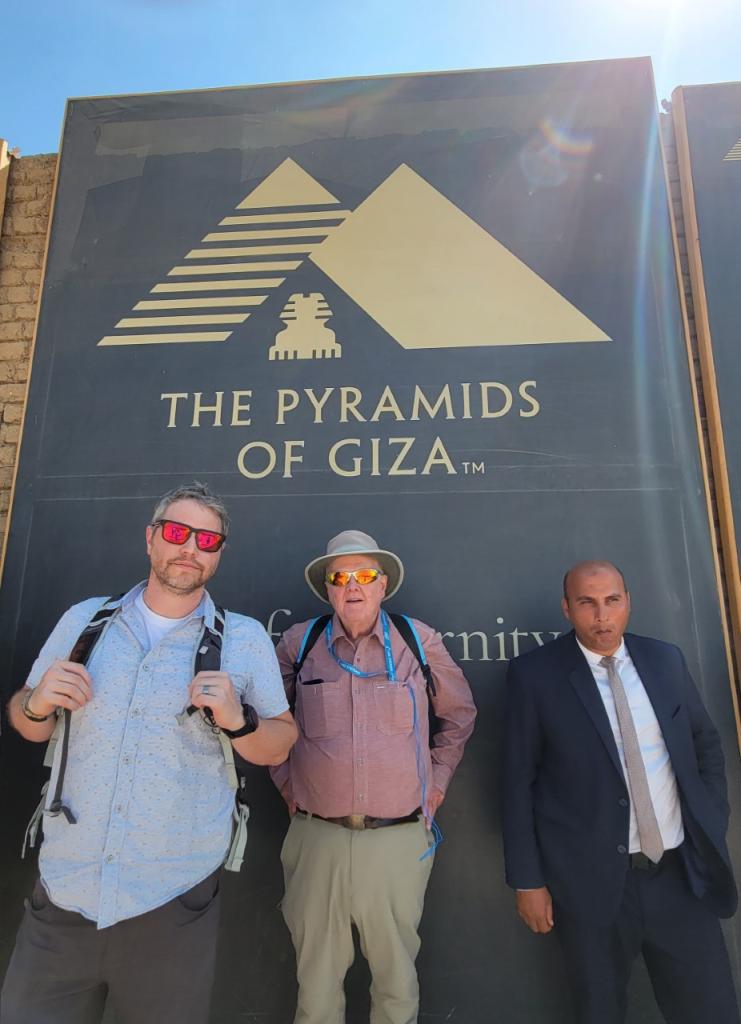
The two on the left were members of my tour group, the guy on the right, burning up in a suit, bless his heart, is our security guard.
Of all the seven wonders of the ancient world, the only one still partially intact are the Giza Pyramids. Rumor has it that the new Egyptology Museum which has been built just behind the pyramids will be open next year…. but it has already been postponed any number of times. Moving all those antiquities has got to be a mammoth undertaking.
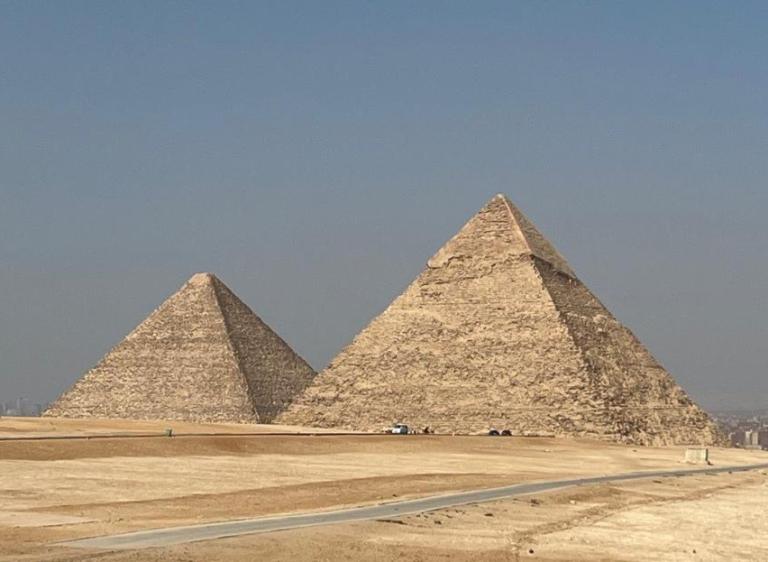 Originally the pyramids did not look like they do today. Up close they look like this—
Originally the pyramids did not look like they do today. Up close they look like this—
Hence the warning sign— do not climb the pyramids. In antiquity that would have been impossible as the sides were smooth, and there is some evidence they were covered with gold to reflect in the sun. Wow.
In fact there are not just three pyramids in Giza plateau, there are many small ones…
In the following picture, you can see the original top, sans gold, on the distant pyramid. 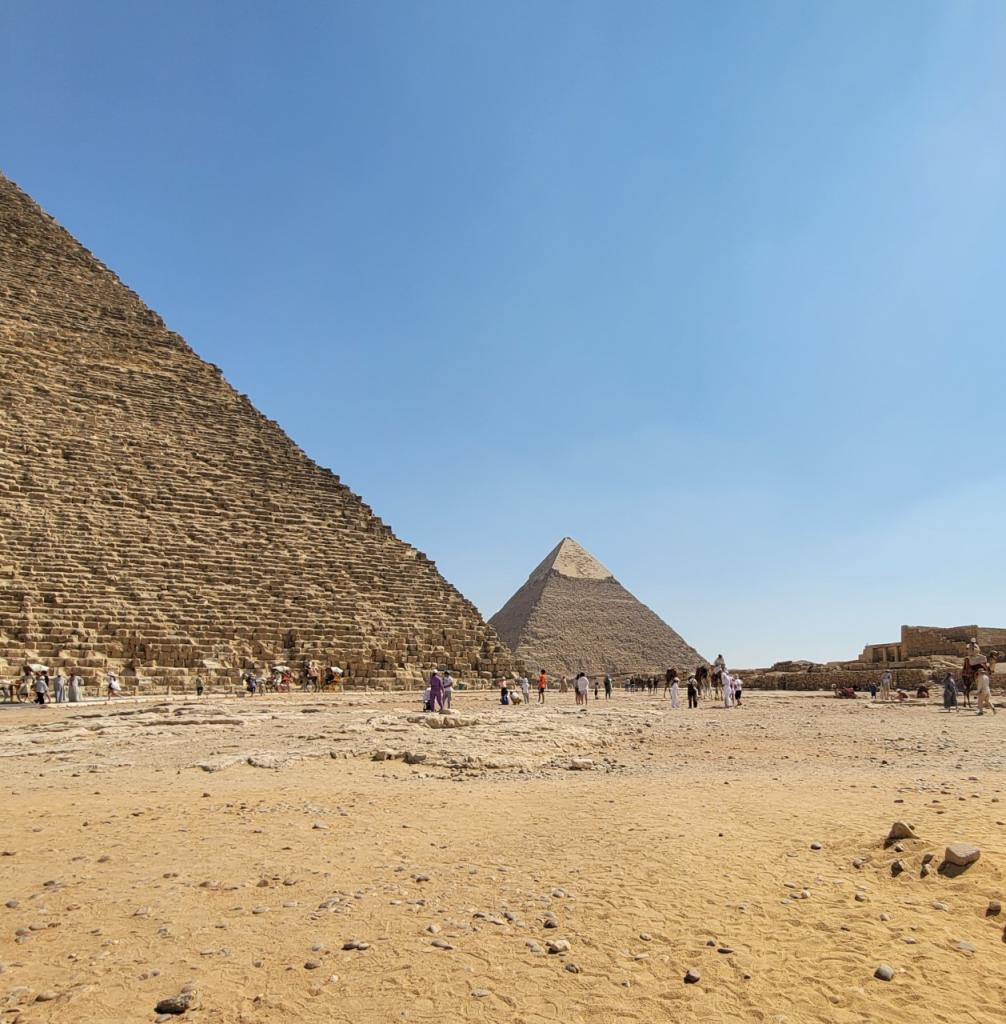
You can see how close this plateau is to the modern city in this picture…
And yes, you can ride around these pyramids on camels for a fee.
You do have to be careful about these guys taking you for a ride, keeping your camera, dropping you off in the desert if you don’t pay them enough etc.
Here’s my happy travelers, followed by a 45th anniversary shot of Ann and I. What a place to celebrate an anniversary. at least the pyramids are a lot older than us!
So we move on to the sphinx— and if you don’t remember the riddle of the sphinx, look it up.
Presumably you can also Google who shot the nose off of the sphinx.
Next we visited the papyrus factory. it is a fascinating demonstrating. From green stalks to strips of papyri, to document…
Note the ordinary rolling pin used to swash the strips together.
What is amazing is how resilient this papyrus material is once dry. the strips are laid horizontally and vertically on top of each other and the natural plant juice glues it together while drying in the sun. Next up the amazing, but not climate controlled Cairo museum of Egyptology.


